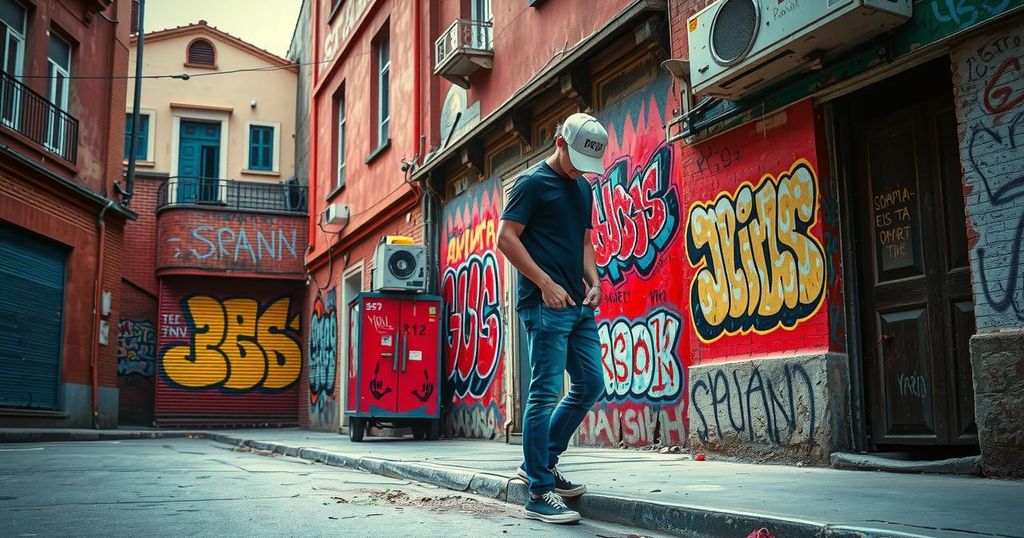Teen Hitmen Plague Colombia Decades After Escobar Hired Kids to Kill

Colombia still faces issues with teenage hitmen decades after the Pablo Escobar era. A recent assassination attempt on presidential hopeful Miguel Uribe by a 15-year-old highlights the continued recruitment of minors by criminal organizations. Reports indicate exploitation of impoverished youths, often lured by financial promises, into violent roles. The impacts of poverty and manipulation by armed groups contribute to this troubling issue, as Colombia attempts to confront a legacy of child violence amid ongoing recovery efforts.
In Colombia, the haunting legacy of teenage hitmen remains a grim reality, stretching back to the notorious Pablo Escobar era. Just last week, authorities apprehended a 15-year-old boy accused of shooting at presidential hopeful Miguel Uribe during a rally in Bogotá. Escobar, known for hiring young assassins to target police and government officials, casts a long shadow over the country as it grapples with similar violence in its modern context.
The government suspects the young shooter, whose condition is reportedly improving but still critical, was merely a hired gun. Investigators are still trying to uncover who orchestrated this attack on Uribe. The boy has expressed willingness to assist the authorities in their inquiries and alleges the orders came from someone within his local drug-dealing neighborhood, known in Colombia as an “olla.”
Matthew Charles, who leads the Mi Historia foundation focused on at-risk youth, asserts that that the recruitment of minors for violent acts is not unique to Colombia. He claims that underprivileged children often find themselves lured into crime, driven by the desperation of poverty. “They are looking for quick solutions because there is no food on the table in their homes at night,” he noted.
On June 12, another individual faced charges for attempted murder in relation to the Uribe incident, accused of supplying the firearm to the young shooter. These cases highlight a troubling trend in which vulnerable youths are manipulated by criminal organizations.
The UN children’s agency, UNICEF, along with the Colombian Institute of Family Welfare (ICBF), recently reported around 530 minors were involved with criminal gangs from 2020 to 2022—serving roles ranging from lookouts to active participants in violence. The alarming recruitment of young people into such roles continues, with a separate ONCA report noting that 142 minors had been enlisted during the first half of last year alone.
These children, typically aged between 13 and 14 and often from impoverished backgrounds, are offered substantial sums for their deadly tasks—between $50 and $500 per victim. Yet many are left disappointed, Charles explains, after being “deceived” into believing they would receive these payments. He points out that poverty grips about a third of the Colombian population.
Additionally, there are disturbing instances of children being manipulated into committing violent acts while under the influence of drugs, as highlighted by ICBF director Astrid Caceres. In just one year, approximately 5,000 youths aged 14 to 17 entered Colombia’s criminal justice system—though specifics on their offenses were not fully disclosed.
Criminal lawyer Francisco Bernate referred to the practice of using children as hitmen as an “old custom” that exploits their already marginalized conditions. He emphasized that youths under 18 are generally viewed as less capable of comprehending the gravity of their actions, which results in shorter prison sentences—typically no more than eight years—compared to adult sentences that can reach 50 years.
Minors are not sent to traditional jails, but to specialized centers for rehabilitation. Meanwhile, the young suspect in the Uribe case has been placed under witness protection together with his family, as the investigation deepens. This recent assassination attempt stirs memories of a darker chapter in Colombian history, when multiple presidential candidates lost their lives under the shadow of Escobar’s reign.
In a sobering reminder of those times, journalist Jorge Cardona recounted the tale of a 16-year-old who, in 1990, shot leftist candidate Bernardo Jaramillo at close range before falling victim to violence himself, a fate that underscores the tragic cycle of youth and violence. Cardona’s book, “Dias de Memoria,” explores the violent legacy that marked Colombia from 1986 to 1991, including the shocking murder of Justice Minister Rodrigo Lara Bonilla by another young assassin in 1984.
The issues raised by these recent events challenge Colombia to confront this ongoing crisis of child violence and exploitation, one that many thought had been relegated to the past as the country continued in its attempts at recovery and stability.
The situation in Colombia regarding youth violence reflects a disturbing cycle that resonates with the history of Pablo Escobar. Child hitmen, often drawn from poverty-stricken backgrounds, continue to be exploited by criminal organizations, igniting fear and reminding the nation of its violent past. As authorities work to understand and address these dynamics, it is clear that significant societal changes are necessary to break this cycle and protect vulnerable youth from being drawn into the grim world of crime.
Original Source: manilastandard.net







